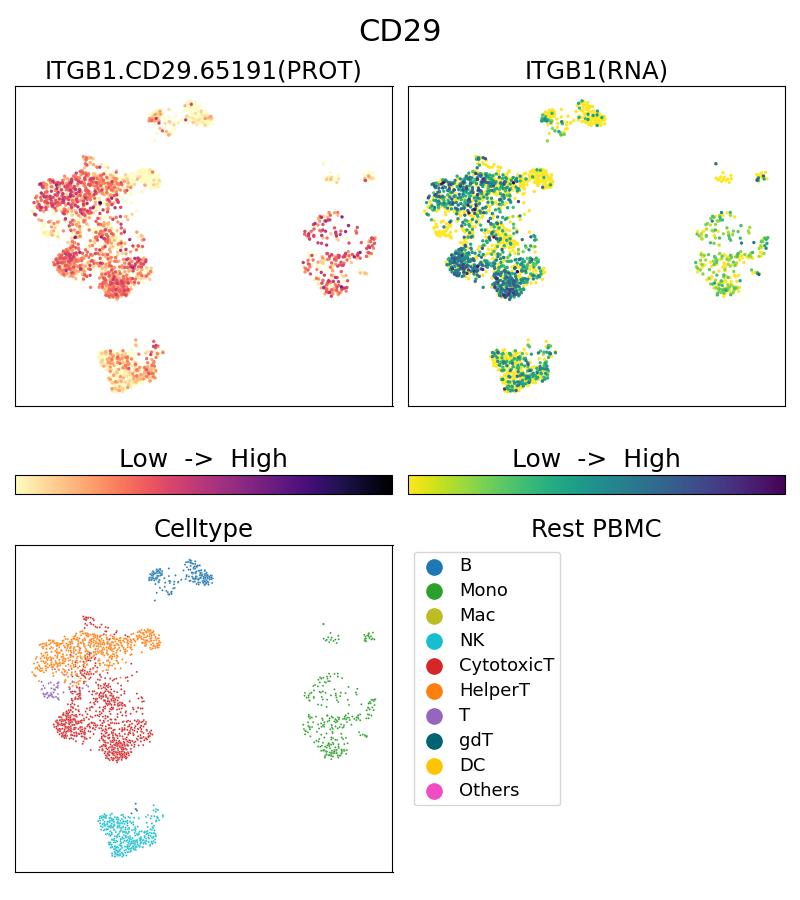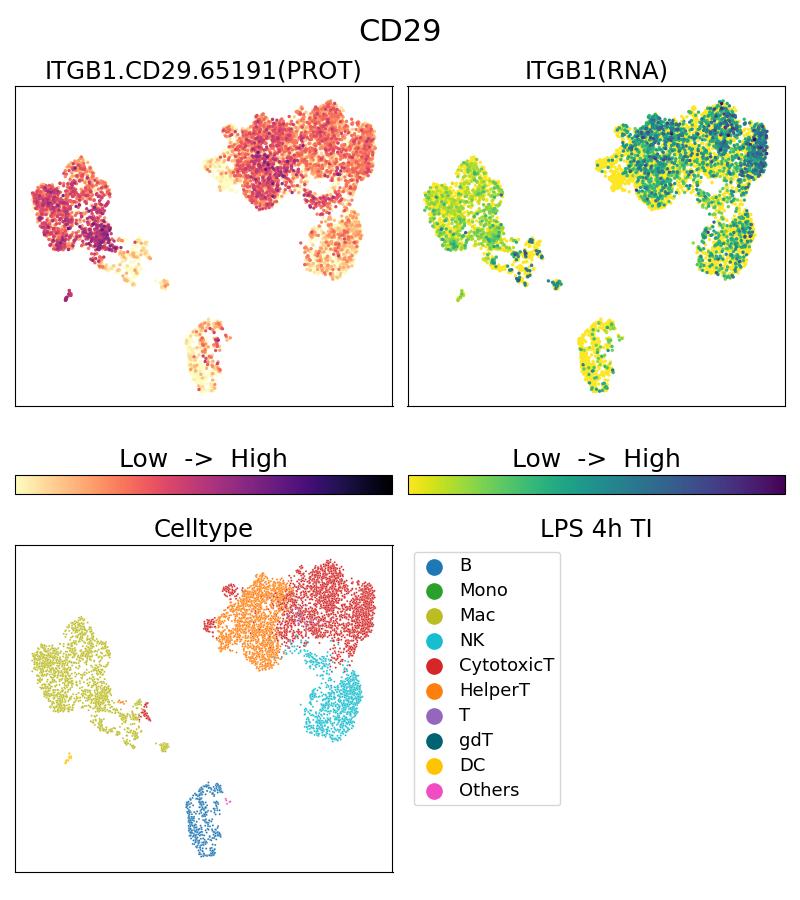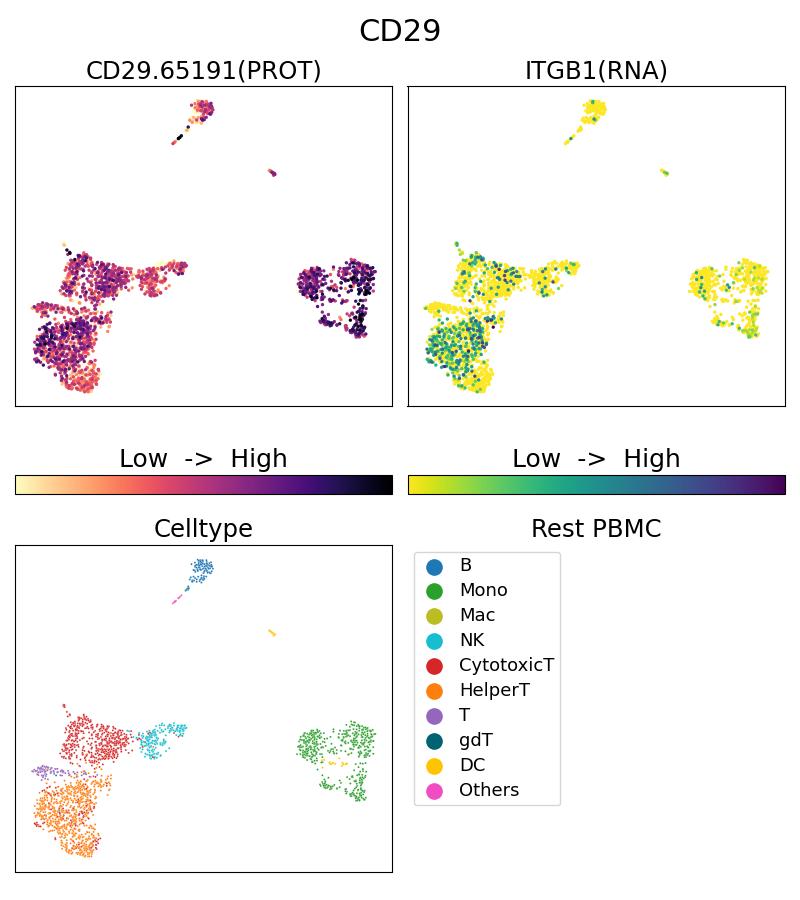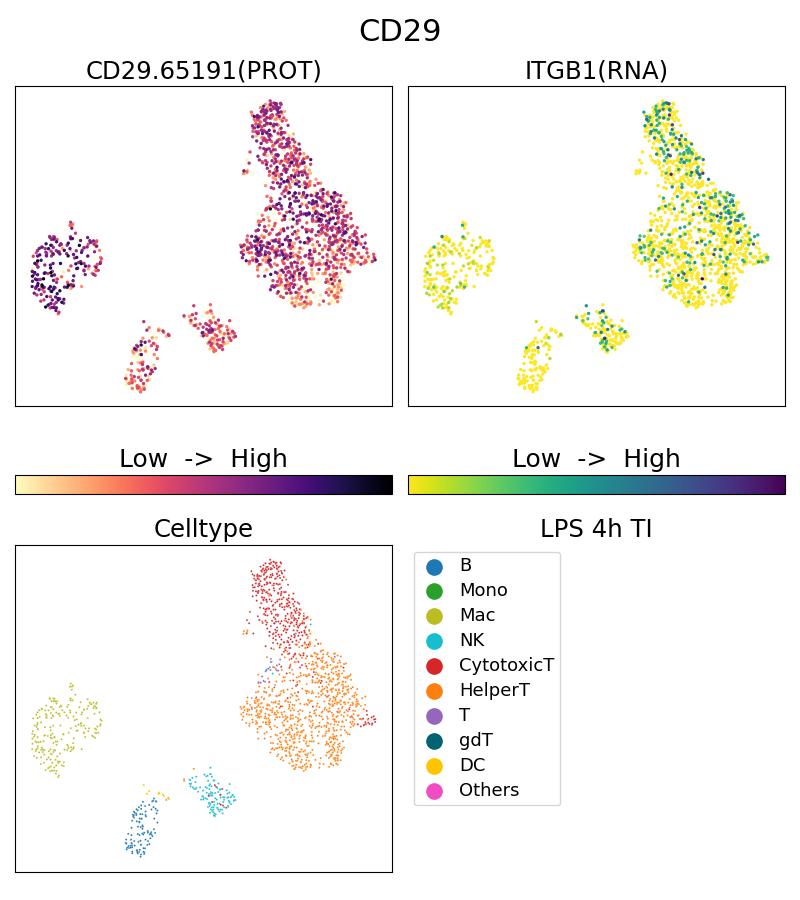Tested Applications
| Positive Single Cell (Intra) detected in | 10x Genomics Gene Expression Flex with Feature Barcodes and Multiplexing product. |
| Positive Single Cell detected in | 10x Genomics Gene Expression Flex with Feature Barcodes and Multiplexing product. |
Recommended dilution
| Application | Dilution |
|---|---|
| SINGLE CELL (INTRA) | <0.5ug/test |
| SINGLE CELL | <0.5ug/test |
| It is recommended that this reagent should be titrated in each testing system to obtain optimal results. | |
Product Information
G65191-1-5C targets CD29 in Single Cell (Intra), Single Cell applications and shows reactivity with Human samples.
| Tested Reactivity | Human |
| Host / Isotype | Mouse / IgG1, kappa |
| Class | Oligo Conjugate |
| Type | Monoclonal |
| Immunogen | N/A Predict reactive species |
| Full Name | MultiPro® 5CFLX Anti-Human CD29 (TS2/16) |
| Calculated Molecular Weight | 88 kDa |
| GenBank Accession Number | BC020057 |
| Gene Symbol | Integrin beta 1 |
| Gene ID (NCBI) | 3688 |
| ENSEMBL Gene ID | ENSG00000150093 |
| RRID | AB_3673929 |
| Conjugate | 5CFLX |
| Full Oligo Sequence | CGGAGATGTGTATAAGAGACAGTGAGAGACACGCATCCCCATATAAGAAA |
| Barcode Sequence | TGAGAGACACGCATC |
| Form | Liquid |
| UNIPROT ID | P05556 |
| Storage Buffer | PBS with 1mM EDTA and 0.09% sodium azide , pH 7.3. |
| Storage Conditions | 2-8°C Stable for one year after shipment. |
Background Information
Integrin beta-1 (ITGB1), also named as CD29, is a 130 kDa single chain type I glycoprotein that is expressed in a heterodimeric complex with one of six distinct α subunits, comprising the very late activation antigen (VLA) subfamily of adhesion receptors. It is one of the essential surface molecules expressed on human MSC from bone marrow and other sources. The β1 subunit is also broadly expressed on lymphocytes and monocytes, weakly expressed on granulocytes, and not expressed on erythrocytes. These receptors are involved in a variety of cell-cell and cell-matrix interactions.
Protocols
| MultiPro™ Cell Surface and Intracellular Staining Protocol | Download protocol |
| 10x Genomics Cell Surface Protein Only Staining Protocol | Download protocol |









